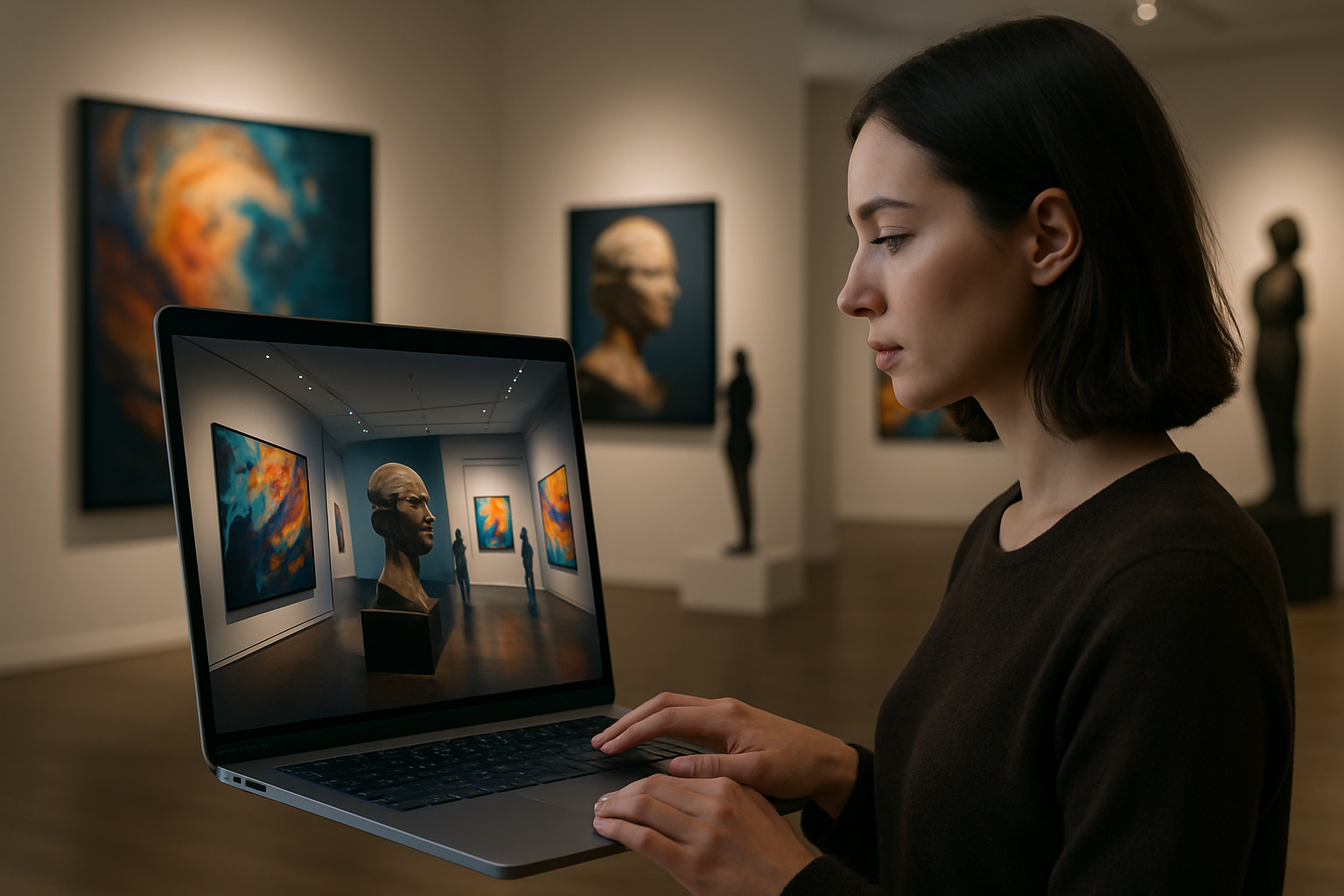A New Wave: Understanding the Surge of Digital Art Galleries
With the world moving swiftly into the digital era, the arts and entertainment industry is no exception. The recent surge in digital art galleries is reshaping the way we consume, appreciate, and interact with art. This article delves into the historical context of this trend, its recent developments, and its impact on the art world.

A Brief Recap: The Traditional Art Gallery
For centuries, art has been primarily showcased in physical galleries and museums. These spaces have been the cornerstone of the art world, providing an intimate setting for viewers to engage with artworks. However, the advent of the digital age has challenged this traditional model, giving rise to a new form of art exhibition: the digital art gallery.
Riding the Digital Wave: The Emergence of Digital Art Galleries
With technological advancements, digital art galleries have started to gain momentum over the past decade. These online platforms allow artists to display their work in a virtual space, accessible to anyone with an internet connection. This democratization of art, propelled by the Covid-19 pandemic, has made art more accessible than ever, crossing geographical and socio-economic barriers.
The Present Scenario: Digital Art Galleries in Today’s World
In recent years, digital art galleries have become more prevalent, with renowned institutions like the Louvre and the British Museum launching virtual tours. Emerging platforms like the Vortic VR app and the Google Arts & Culture project have also paved the way for a more immersive digital art experience. These developments have allowed the public to explore world-class art collections from the comfort of their homes, a trend that shows no signs of slowing down.
The Impact and Reception: How Digital Art Galleries are Changing the Game
The rise of digital art galleries has had a significant impact on artists, art enthusiasts, and the broader art industry. Artists now have a global platform to showcase their work, making it easier to gain recognition and engage with a worldwide audience. For viewers, these platforms offer an opportunity to appreciate art without the constraints of location, time, or cost. Critics, however, argue that digital galleries cannot replicate the sensory experience of viewing art in person.
The Future Outlook: What Lies Ahead for Digital Art Galleries
While it’s clear that digital art galleries are reshaping the art world, their future remains uncertain. As the world gradually recovers from the pandemic, it will be interesting to see if the popularity of digital galleries continues to rise or if traditional galleries will reclaim their dominance. What’s certain, however, is that digital art galleries have forever altered the landscape of the art world, heralding a new era of art appreciation and engagement.
The emergence of digital art galleries marks a pivotal moment in the history of art. As we navigate this digital revolution, it’s imperative to embrace the opportunities it presents while critically assessing its implications. Whether digital or physical, the ultimate goal remains the same – to appreciate, understand, and interact with art in a meaningful way.





